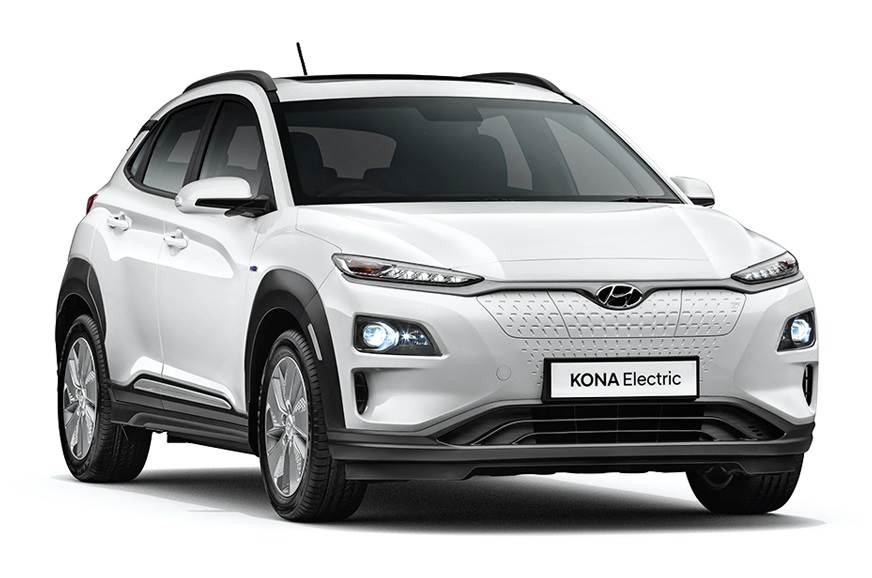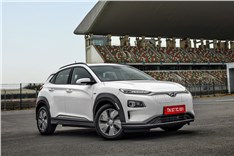Mahindra recently announced prices for the all-electric XUV400 SUV in India. Based on the ICE-powered compact XUV300, the Mahindra XUV400 is a direct rival to the Tata Nexon EV. This then becomes only the second home-grown mass-market electric SUV that you can currently buy in the market.
We pit the XUV400 against the Tata Nexon EV, as well as the MG ZS EV and Hyundai Kona Electric, both of which it also matches closely in terms of specifications. Read on to see which electric SUV comes out on top on paper in terms of size, specs, range and price.
Mahindra XUV400 vs rivals: dimensions
| Mahindra XUV400 vs rivals: dimensions | ||||
|---|---|---|---|---|
| Model | XUV400 | Nexon EV | ZS EV | Kona Electric |
| Length | 4200mm | 3993mm | 4323mm | 4180mm |
| Width | 1821mm | 1811mm | 1809mm | 1800mm |
| Height | 1634mm | 1606mm | 1649mm | 1570mm |
| Wheelbase | 2600mm | 2498mm | 2585mm | 2600mm |
| Boot capacity | 378 litres | 350 litres | 359 litres | 332 litres |
| Wheel size | 16-inch | 16-inch | 17-inch | 17-inch |
Although based on the sub-4m XUV300, the XUV400's length has been increased – by 205mm – because the tax benefits valid for cars under 4 metres do not apply to EVs.
Compared to its rivals, the XUV400 is longer than both the Nexon EV and Kona Electric, but is 123mm shorter than the MG ZS EV. It is, however, the widest SUV in its class. In terms of height again, the XUV400 is taller than both Nexon EV and Kona Electric, but is 15mm shorter than the ZS EV.
The XUV400 also has the longest wheelbase, which, at 2,600mm, is also identical to that of the Kona Electric. Thanks to the added length, the Mahindra electric SUV also has the largest boot in its segment. As for their wheel sizes, the XUV400 and Nexon EV ride on 16-inch wheels, while the ZS EV and Kona Electric ride on larger 17-inch units.
Mahindra XUV400 vs rivals: power, range and performance
| Mahindra XUV400 vs rivals: power, range and performance | ||||
|---|---|---|---|---|
| Model | XUV400 | Nexon EV | ZS EV | Kona Electric |
| Motor type | Permanent magnet synchronous | Permanent magnet synchronous | Permanent magnet synchronous | Permanent magnet synchronous |
| Power | 150hp | 129hp/145hp | 176hp | 136hp |
| Torque | 310Nm | 245Nm/250Nm | 280Nm | 395mm |
| Battery capacity | 34.5kWh/39.4kWh | 30.2kWh/40.5kWh | 50.3kWh | 39.2kWh |
| Claimed range | 375km/456km | 312km/453km | 461km | 452km |
| Claimed 0-100kph | 8.3 secs | Under 9.0 secs/9.0 secs | 8.5 secs | 9.3 secs |
Chief rivals, the XUV400 and Nexon EV, both get two battery pack options. The former gets a 30.2kWh battery and a larger 40.2kWh battery, while the latter gets a 34.5kWh battery and a 39.5kWh battery. In their entry-level versions, it’s the Nexon EV that gets the smaller battery pack, although the larger battery packs on both models have a marginal difference. Meanwhile, the MG ZS EV has the largest battery capacity of 50.3kWh, while the Kona Electric’s battery is marginally smaller than the higher-spec variants of the XUV400 and Nexon EV.
Consequently, the Nexon EV Prime with the smaller battery has 63km less claimed range than the one on the XUV400. Meanwhile, claimed range from the higher variants of the Nexon EV and XUV400, along with the Kona Electric and ZS EV, are very close to each other – the ZS EV has the highest, while the Kona Electric has the least. However, its important to note that the ZS EV uses a much larger battery for only a marginal increment in range over the others. Do also note that the real-world driving range of each SUV will differ as per driving conditions and driving style.
In terms of power outputs, the ZS EV is the most powerful with 176hp, while the XUV400 comes in second with 150hp. The Nexon EV Max slots right in the middle with 143hp, followed by the Kona Electric at 136hp. Unsurprisingly, Prime versions of the Nexon EV are least powerful of the lot. What the Kona Electric lacks in terms of power, it makes up with class-leading torque figures by quite a fair margin. Again, the XUV400 slots in second in terms of torque output, while the Nexon EV has the least torque.
In terms of performance, all SUVs can sprint from 0-100kph in less than 10 seconds, but it’s the XUV400 that’s the quickest at 8.3 seconds. Meanwhile, the Kona Electric is the slowest at 9.3 seconds. Do note that these are manufacturer claimed figures and might differ in real world tests.
Mahindra XUV400 vs rivals: charging
| Mahindra XUV400 vs rivals: Charging | ||||
|---|---|---|---|---|
| Model | XUV400 | Nexon EV | ZS EV | Kona Electric |
| 0-80% (50kW DC) | 50mins | 56mins | 60mins | 57mins |
| 0-100%(7.2kW AC) | 6hrs 30min | 5-6hrs | Up to 9hrs (7.4kW) | 6hrs 10mins |
| 0-100% (3.3kW AC) | 13hrs | 15-16hrs | - | 19hrs (2.8kW) |
Although all SUVs here have different battery sizes, it’s the XUV400 that charges the fastest from 0 to 80 percent using a 50kW DC fast charger. Meanwhile, the ZS EV takes the longest, and understandably so, as it also has the largest battery pack.
However, when using a 7.2kW AC charger, the Nexon EV Max tops up its battery the quickest, followed by the Kona Electric and XUV400. Here again, the ZS EV takes the longest to charge. Lastly, using a standard domestic charger, the XUV400 is the quickest to top up its batteries to 100 percent, followed by the Nexon EV Max and then the Kona Electric.
Mahindra XUV400 vs rivals: pricing
| Mahindra XUV400 vs rivals: pricing | ||||
|---|---|---|---|---|
| Model | XUV400 | Nexon EV | ZS EV | Kona Electric |
| Price | Rs 15.99 - 18.99 lakh | Rs 14.49 - 18.99 lakh | Rs 22.98 - 26.90 lakh | Rs 23.84 lakh |
Mahindra has priced the new XUV400 between Rs 15.99 lakh and Rs 18.99 lakh, but it’s only introductory for the 5,000 bookings for each variant of the model. Meanwhile, Tata Motors recently revised the prices for the Nexon EV which is now priced between Rs 14.49 lakh to Rs 18.99 lakh. Tata Motors actually marked down the prices of the Nexon EV in response to the launch of the XUV400. The Nexon EV, therefore, continues to be the most affordable electric SUV in the country with its base price having an advantage of Rs 1.5 lakh over the XUV400. Both SUVs, however, are priced exactly the same at their top-end.
The MG ZS EV and the Kona Electric, meanwhile, are positioned slightly above the other two. Although the former has a lower starting price, it’s also the most expensive mass-market electric SUV at its top end by a fair margin.
*all prices ex-showroom, Delhi
Would you pick the Mahindra XUV400 over any of its rivals? Let us know in the comments below.
Also See:
2022 Mahindra XUV400 EV review – A powerful electric SUV
2022 Mahindra XUV400 EV video review
Toyota Urban Cruiser Hyryder vs rivals: specifications comparison










Comments
Member Login
Personal Details
No comments yet. Be the first to comment.